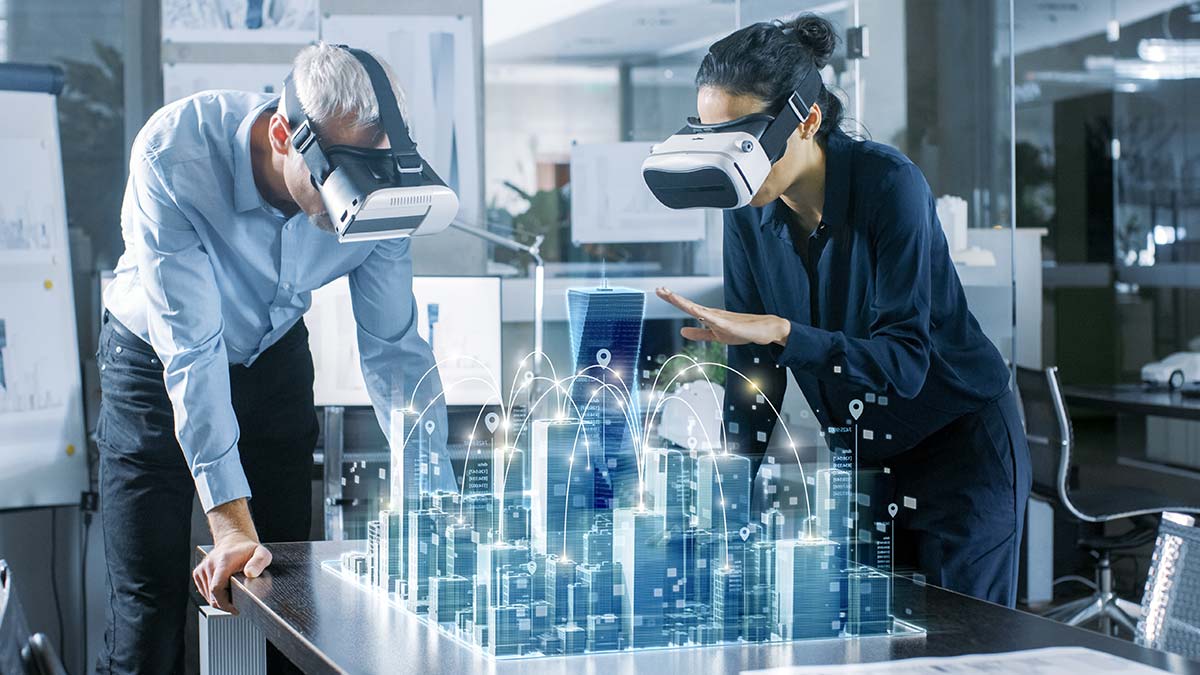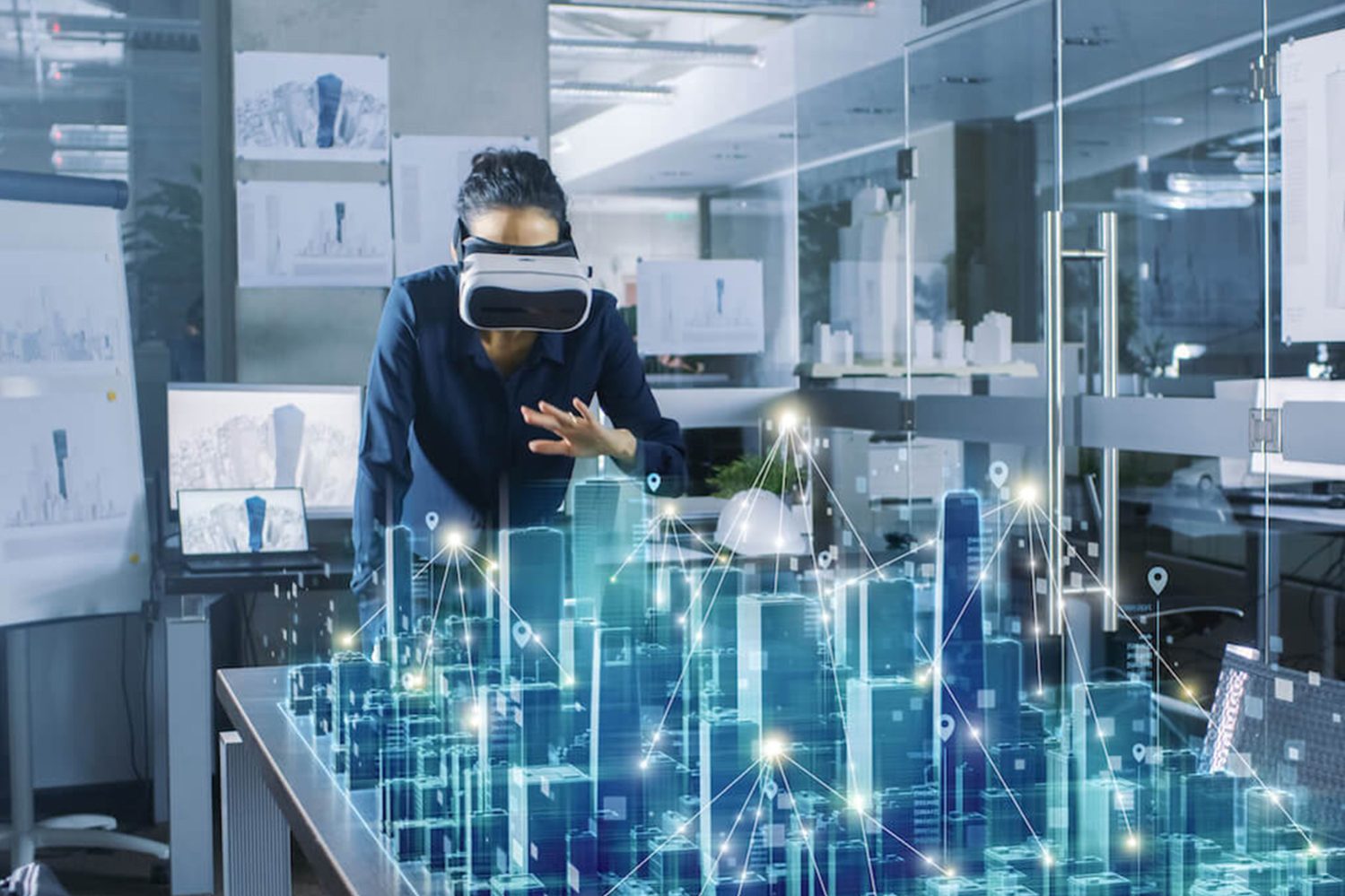Virtual Reality (VR) technology has revolutionized the field of architectural design, offering designers and architects the ability to create immersive and realistic experiences. With VR, architects can now explore their designs in a virtual environment before construction even begins, allowing them to identify potential flaws, make necessary adjustments, and visualize the final product in a way that traditional 2D drawings cannot capture. This transformative technology has not only enhanced the design process but has also improved communication between architects and clients, enabling them to fully understand and experience the architectural vision.

Virtual Reality and Architectural Design: A Paradigm Shift
Virtual reality (VR) technology has revolutionized various industries, and the field of architectural design is no exception. The integration of virtual reality into the architectural design process has brought about a significant paradigm shift, offering architects, designers, and clients a new way to visualize and experience architectural spaces.
Traditionally, architects relied on two-dimensional drawings and physical scale models to communicate their design ideas to clients. While these tools have their merits, they fall short in truly conveying the spatial qualities, ambiance, and scale of a design. This is where virtual reality steps in, providing a realistic and immersive experience that enables stakeholders to explore and evaluate architectural spaces before they are built.
The use of virtual reality in architectural design has not only improved communication and collaboration but has also accelerated the design process. Architects can create virtual 3D models of their designs and navigate through them in real-time, making decisions about spatial configurations, materials, lighting, and more. This interactive and dynamic design process enables architects to iterate and refine their designs more efficiently, saving time and resources in the long run.
Enhancing Visualization and Communication
One of the most significant advantages of virtual reality in architectural design is its ability to enhance visualization and communication. With VR, architects can create immersive virtual environments that allow clients, stakeholders, and even the public to experience and understand architectural designs in a way that 2D drawings or physical models cannot achieve.
Virtual reality enables users to explore and interact with architectural spaces as if they were physically present. They can walk through buildings, experience different lighting conditions, and even visualize how the design will change over time. This level of immersion provides a more profound understanding of the design intent, allowing clients to make informed decisions and provide valuable feedback early in the design process.
Moreover, virtual reality bridges the gap between architects and non-technical stakeholders by eliminating the need for specialized design knowledge to understand architectural drawings. Clients and investors can now experience and evaluate a design in a realistic and intuitive manner, resulting in more meaningful and productive discussions. This improves collaboration, reduces misinterpretations, and ensures that the final built environment aligns with the client’s vision and requirements.
In addition to client communication, virtual reality also enables architects and designers to collaborate more effectively with each other. By immersing themselves in a virtual environment, team members can visualize and discuss design elements, identify potential issues, and make informed decisions about the design. This level of collaboration enhances creativity, leads to better design outcomes, and streamlines the communication process within the design team.
Streamlining the Design Process
Virtual reality accelerates the architectural design process by streamlining various stages and tasks involved in bringing a design from conception to realization. The integration of VR technology allows architects to work more efficiently and make informed decisions throughout the design process.
Creating virtual 3D models of architectural designs enables architects to explore and evaluate different design options in real-time. They can manipulate the building’s form, adjust materials and finishes, experiment with spatial configurations, and assess the impact of design choices on the overall experience. This level of flexibility and interactivity empowers architects to iterate their designs rapidly and visualize the consequences of their decisions.
Virtual reality also facilitates the coordination and integration of various design disciplines. For instance, architects can overlay MEP (mechanical, electrical, plumbing) systems directly onto their virtual models, allowing them to identify potential clashes or conflicts early on. This preemptive detection of design clashes saves time and resources that otherwise would have been spent on rework or redesign during construction.
Furthermore, virtual reality can assist in the process of obtaining approvals and permits from regulatory authorities. By providing an immersive virtual experience of the proposed design, architects can effectively communicate their design intent and address any concerns or requirements raised by the authorities. This improves the efficiency of the approval process, reduces the likelihood of misunderstandings, and ensures compliance with building regulations.
Overall, the use of virtual reality in architectural design streamlines the design process, improves decision-making, and minimizes errors or rework, ultimately resulting in more efficient and cost-effective project delivery.
Unleashing Creative Possibilities
Virtual reality opens up a realm of creative possibilities for architects and designers, enabling them to push the boundaries of traditional architectural design. By immersing themselves in a virtual environment, architects can explore unconventional design concepts, experiment with novel materials and textures, and create immersive and interactive architectural experiences.
With VR technology, architects can easily manipulate and visualize complex spatial geometries that would have been challenging to comprehend solely through 2D representations. This allows for the creation of unique and innovative architectural forms that are not limited by traditional design constraints. Additionally, virtual reality offers architects the opportunity to design for sensory experiences by simulating various lighting conditions, acoustics, and even the natural elements like wind and water.
Furthermore, virtual reality has the potential to revolutionize urban planning and public engagement. Architects and urban planners can create virtual cities where users can explore, evaluate, and provide feedback on proposed developments and infrastructure projects. This participatory approach to urban planning empowers communities to have a voice in the design process, fostering a sense of ownership and creating more inclusive and sustainable built environments.
In conclusion, virtual reality has brought about a paradigm shift in architectural design, revolutionizing the way architects visualize, communicate, and create architectural spaces. From enhancing visualization and communication to streamlining the design process and unleashing creative possibilities, virtual reality has become an indispensable tool in the modern architectural design workflow. As technology continues to advance, the integration of virtual reality into architectural design will only continue to grow, pushing the boundaries of what is possible in the field.
For more information on the exciting possibilities of virtual reality in architectural design, visit [link with relevant anchor text].
Key Takeaways
- Virtual reality is revolutionizing the field of architectural design.
- Architects can use virtual reality technology to create immersive and interactive experiences for clients.
- Virtual reality allows architects to easily visualize and explore their designs before construction begins.
- Virtual reality is enhancing collaboration among architects, engineers, and clients during the design process.
- The use of virtual reality in architectural design is expected to continue growing and transforming the industry.

Virtual reality has already had a significant impact on architectural design.
By enabling designers to create immersive virtual environments, VR technology allows for better visualization and understanding of architectural spaces.
From presenting design concepts to clients to facilitating collaboration among project teams, VR has become an essential tool in the architectural industry.
The evolution of VR technology will continue to revolutionize architectural design by offering more realistic experiences and enhanced design processes.
Designers will be able to explore and refine their ideas in virtual environments, leading to more efficient and innovative design solutions.
In conclusion, virtual reality is transforming the way architects approach design, allowing for better communication, collaboration, and creativity.


